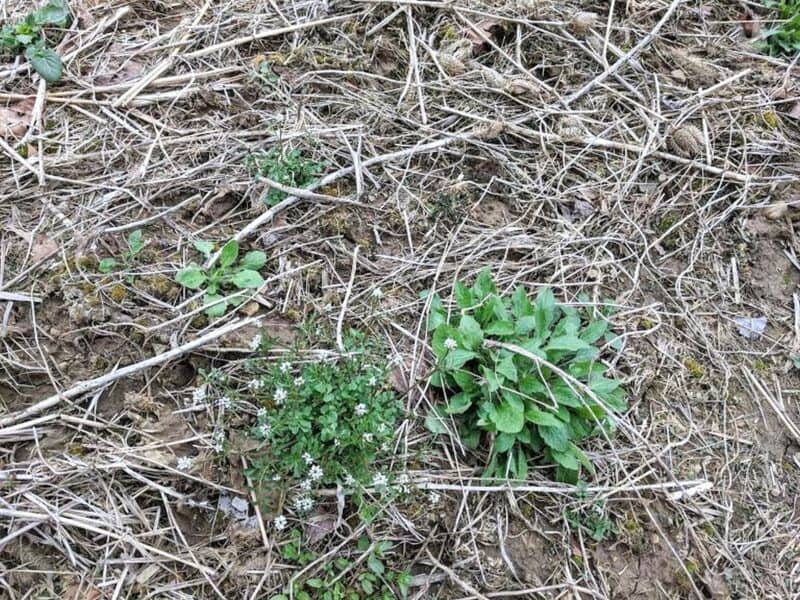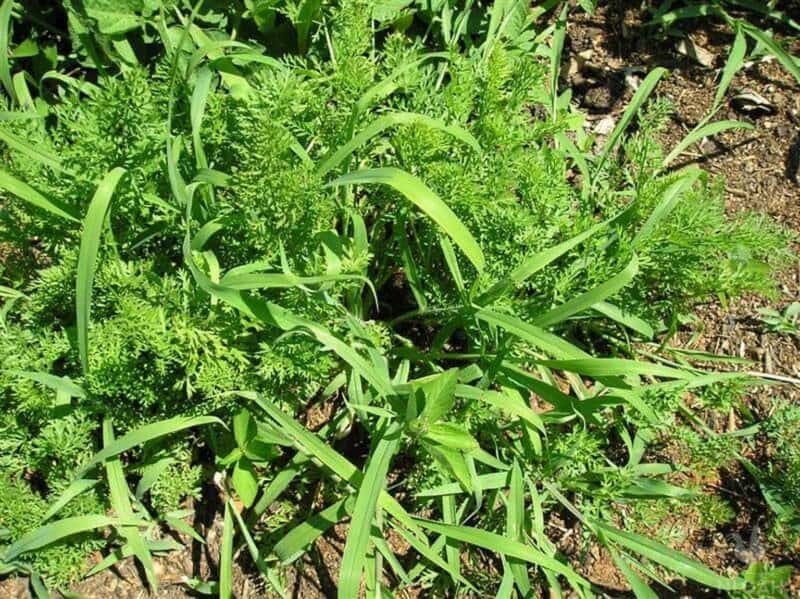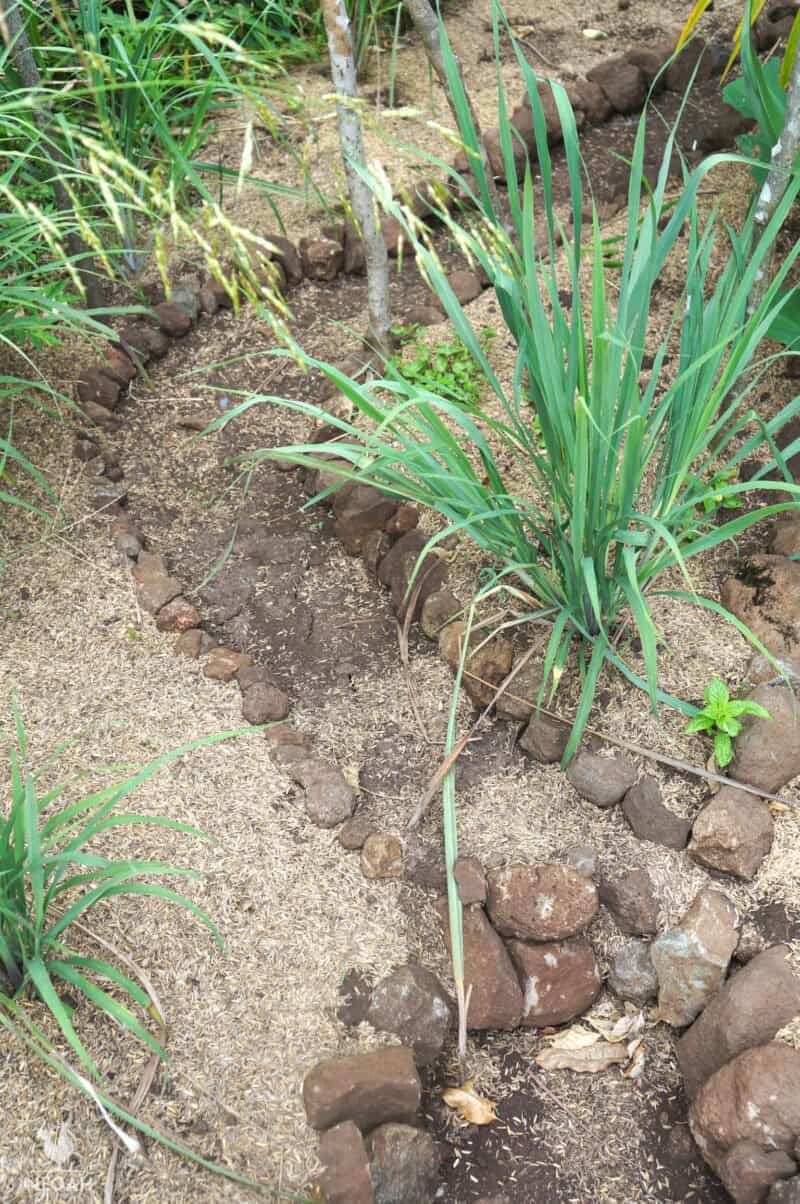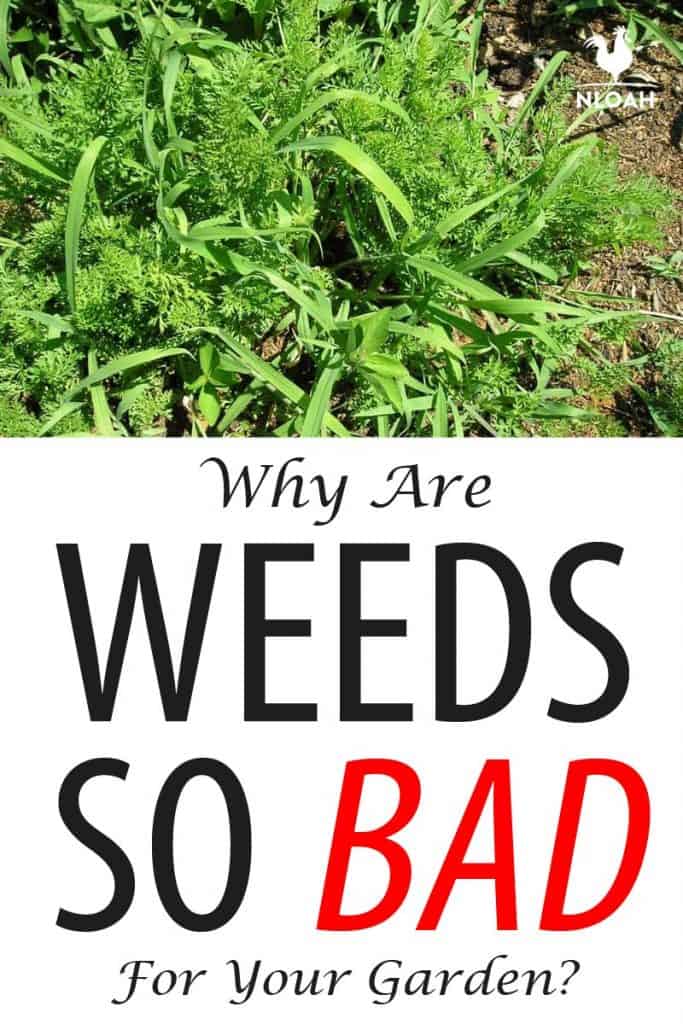Spend hours pulling weeds, with sweat dripping off your brow, and you might be wondering, “why are weeds so bad for your garden?”
Sure, they don’t look all that great – but are they really that harmful? There are some benefits to letting weeds flourish in your garden, but there are also some risks, too. Here’s everything you need to know about letting weeds grow in your garden.

Are Weeds Really That Bad?
Weeds aren’t always bad for your garden, and some of them area actually tasty and can make their way into your kitchen. However, in general:
Yes, weeds are bad because they block out sunlight, they compete for air, they steal water and nutrients from your other plants, they aren’t as tasty as your veggies, and may even secrete chemicals that inhibit other plants’ growth.
What is a Weed?
Technically, a weed is just any plant that is growing somewhere you do not want it to. It is usually one that provides no value in terms of nutrients, food, or visual appeal.
A weed tends to spread quickly and can be difficult to eliminate. Otherwise, a weed could take on many forms.
Here are 6 good reasons why weeds are bad for your garden…
Reason #1: Competition With Other Plants
The main issue you are going to find with weeds in your garden is that they will compete with the other plants you are attempting to grow. While some weeds can grow in harmony alongside your cultivated plants, the battle for space and nutrients often is not one that your plants can win.
Sadly, weeds are usually well-adapted to the areas in which they are being grown (and this is typically not the case with the plants you actually want to cultivate, for the record).
Weeds fight with plants for water, nutrients, light, and space, and unfortunately, since they’re the stronger competitors, they usually win.
Weeds develop strong, vigorous root systems that overpower those of cultivated plants – especially in those cultivated plants are fragile or were recently transplanted.
Weeds can grow quickly, taking root downwards and outwards, so that your plants don’t stand a fighting chance.
They can create their own individual micro-climates that cause plants to become too cold in the morning. They can also cause your plants to become dehydrated.

Reason #2: They Hide Your Plants
Sometimes, weeds can hide your crops altogether.
This can not only make it more difficult for you to find the plant to care for it (and increase the likelihood that you’ll accidentally pull up your crop when you’re weeding the garden) but they can also hide the plant from pollinators, too.
Reason #3: Pests and Diseases
Weeds also make your plants more susceptible to pests and diseases. Weeds left to flourish provide a valuable overwintering and hiding spot for pests. The weed canopy can also shelter pests like snails and slugs.
Not only that, but weeds are adapted for germinating in tough conditions. Many can start growing long before it’s time to plant your garden crops.
This means that they will provide food and habitat for pests like aphids much earlier in the year, helping them gain a foothold before your own plants can get in there to start growing.
Not only that, but weeds that are in the same family as the plants you are trying to grow (like brassicas) can harbor diseases that can be transmitted back and forth between the plants.
For instance, shepherd’s purse is a wee in the brassica family that can harbor club foot disease- which is a disease that can harm any plant in the cabbage family.
Reason #4: Some Weeds are Allelopathic
Allelopathic plants are those that create zones of infertility around their roots. This allows the weed to take full advantage of the nutrients, water, and sun that are available around the plant.
They can sometimes even stop the germination of your plant seeds altogether!
Weeds with allelopathic compounds include thistle, pigweed, and lambs’ quarter, just to name a few.
Reason #5: Difficulty with Harvesting Other Crops
If you’ve ever tried to harvest a low-growing crop, like an herb, that is surrounded by weeds, you’re going to have one heck of a time doing it!
Weeds not only make it more challenging to pull up the desirable parts of your edible crop, but they also can damage their root systems of your plants, making them more difficult to trim without damaging the entire plant.
Harvesting plants grown in close proximity to weeds can also be challenging because it’s next to impossible to separate low-growing foliage from the weeds. Not all weeds are edible, either, which means you’ll have to spend more time sorting things out later.
Reason #5: They are Unsightly
The surprising reason why most gardeners want to eliminate weeds in their gardens is that they are not pleasant to look at. While some weeds have ornamental values, most are not pretty and look unappealing, especially in a highly formal garden.
Tips for Controlling Weeds
Pulling weeds by hand is not your only option for getting rid of unwanted plants in the garden. While regular weeding is the best way to stay on top of these growths, you can also remove and control weeds in a number of other ways.
One of the best ways is to add a thick layer of mulch. When organic mulch is applied at one- or two-inch depth, it can not only suppress weeds but also help the soil retain moisture.
The best options are straw, compost, and shredded bark, although there are many other types of mulch you can use, too.
In some cases, you may be able to leave the weeds where they are. Sometimes, digging and cultivating can draw weed seeds to the surface, making it more likely that two weeds will grow where you only pulled one.
If weeds are growing in close proximity to small seedlings with fragile roots, like carrot seedlings, pulling them up too soon can also damage your developing plants, too.
Mind your spacing when you plant. If you are able to plant individual plants close together, you will be able to choke emerging weeds by filling and shading the soil between the plant
Often, you can remove about a quarter of the recommended spacing that you see on a seed packet or guidelines from a nursery.
When you water your plants, only water the ones you want to water – and not the weeds. This can be accomplished by using drip irrigation or soaker hoses to irrigate just the plants you want to water.
It can reduce weed seed germination by up to seventy percent, in fact, since the weeds will be deprived of moisture.
When you do weed, try to time the chore for the best results. You will want to pull the weeds when the soil is wet, which will make your work much easier.
You can also get tools in on the job, using equipment like fishtail weeders to remove tap-rooted weeds or table forks to get out weeds with long tendrils, like chickweed.
If you need to do your weeding when the soil is dry, use a hoe to slice weeds off just at the soil line.
This will cause the weeds to shrivel up and die, especially if the hoe has a sharp edge. You can also use something like a steak knife to sever tough weeds, too.
When you’re done with the wedding, toss all of them (except for ones that are known to be harmful) into a hot compost pile. Make sure the pile is hot – weed seeds can easily remain active between years, but a hot compost can help kill them out.

What Are the Benefits of Weeds in a Garden?
That’s not to say that all weeds are bad! There are some weeds that are known as “functional” weeds. They can help prevent erosion and break up compacted soil.
Some weeds can mine out minerals, while others serve as valuable cover crops while the ground is not being worked. There are other weeds that can fertilize depleted soils, while others provide vital nutrients, like nutrients.
Plants like ground ivy and crabgrass might not be that beautiful to look at, but they can help prevent the soil from washing away and prevent nutrients from leaching out during heavy rains.
And there are plenty of weeds out there that are edible, meaning you might be able to get some use out of them after all.
In addition, some weeds are known as “dynamic accumulators.” Dynamic accumulators are weeds that possess diving taproots.
These taproots go deep into the soil, pulling up minerals and vitamins that other plants can’t get to.
They deposit their leaves atop the soil, and once those leaves decompose, the nutrients are deposited into the upper layers of the soil.
Examples of dynamic accumulators include dandelions and comfrey – both of which, as a side note, are also fantastic sources of food for pollinators.
Plus, some weeds can help balance out the nutrient profile of the soil. For example, thistle shows that your soil is deficient in copper and iron, while bracken ferns tend to grow where there is too little phosphorus.
Before you pull your weeds, consider what value they might have for the land around them.
At the very least, consider where they are growing, and try to figure out whether there might be a message that they are trying to transmit to you! You can use this valuable information when it’s time to plant your garden later on in the year.
Pulling Weeds Isn’t So Bad!
I don’t know that there’s any gardener out there that actually likes pulling weeds, but try to be optimistic when it comes to getting rid of weeds in your garden.
Weeding the garden gives you an opportunity to be outside and get some much-needed fresh air, plus it burns a ton of calories. There are other health benefits to pulling weeds, too, which we won’t get into here.
However, what’s important to realize is that the better you are able to stay ahead of weed in the garden, the more productive and successful your garden will be.
Fail to pull weeds when they’re first getting started, and you’ll have a harder time reigning them in later on down the road. Do what you can today for a successful – and weed-free!- crop of plants tomorrow.


Rebekah is a high-school English teacher n New York, where she lives on a 22 acre homestead. She raises and grows chickens, bees, and veggies such as zucchini (among other things).
